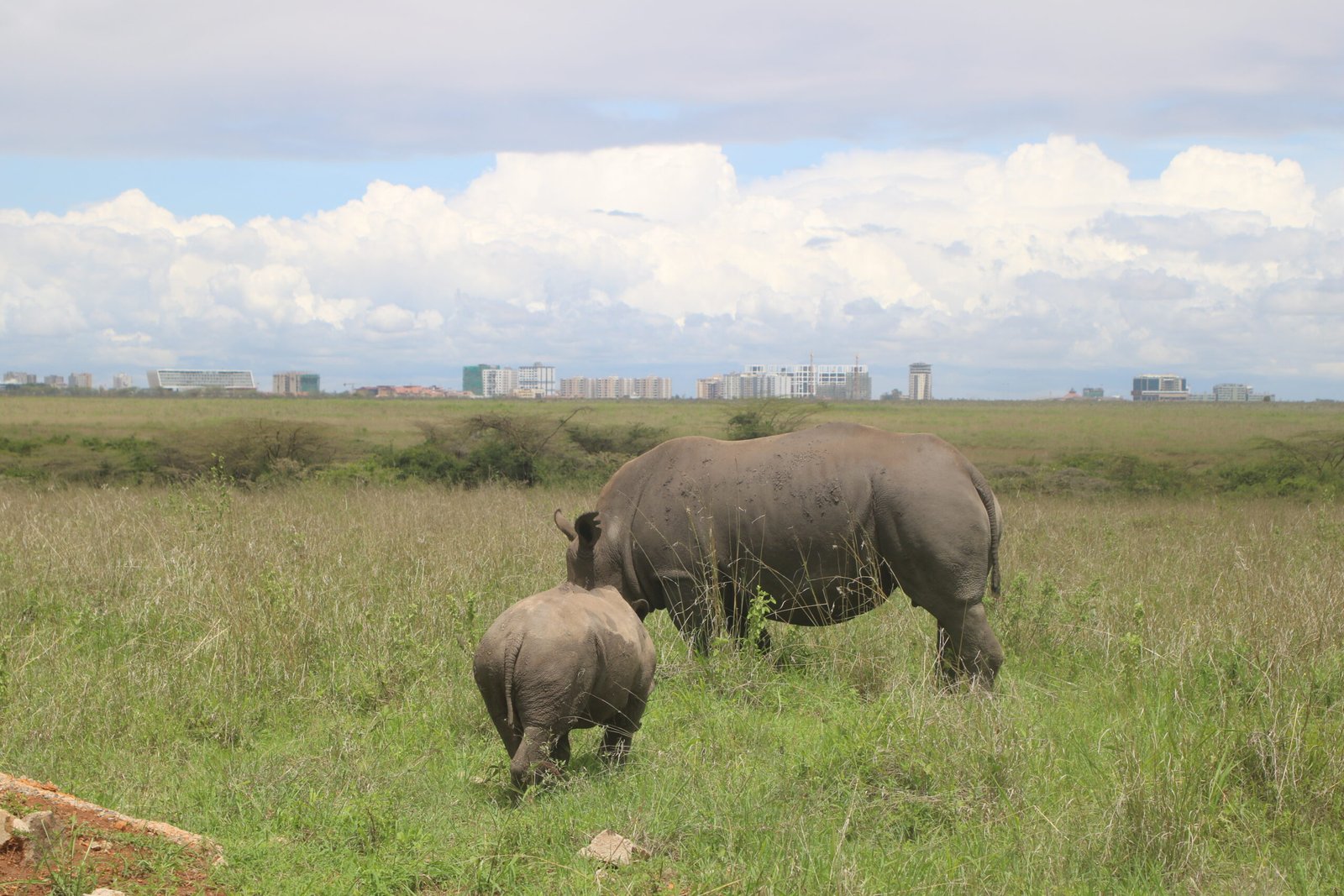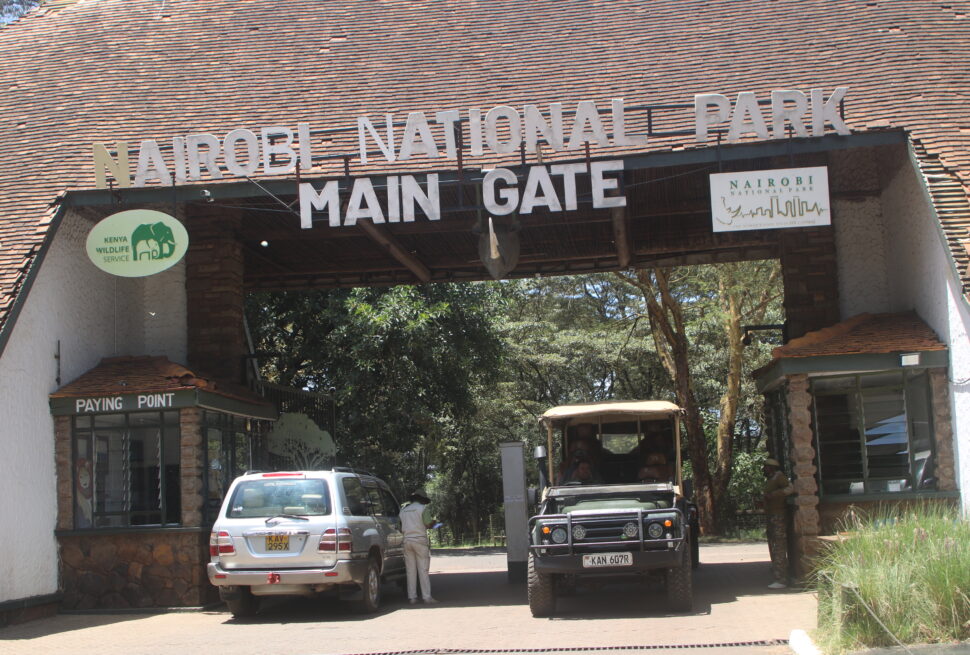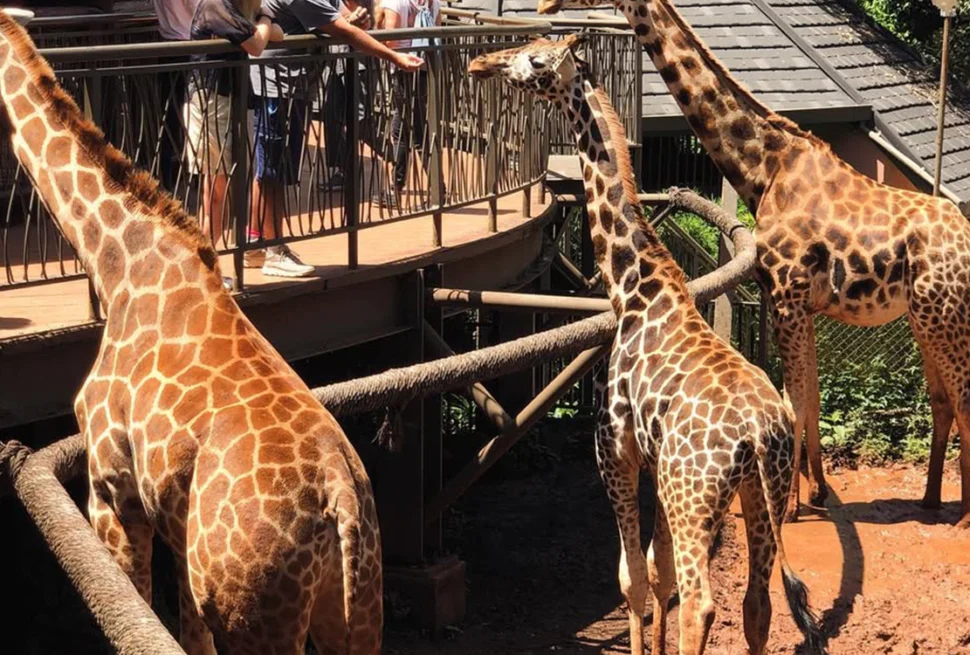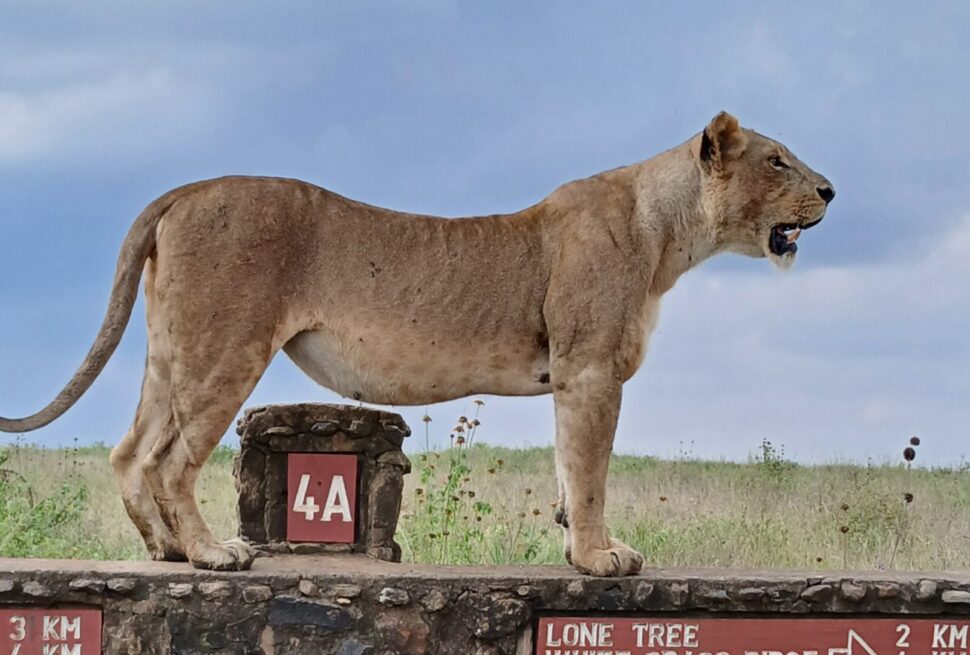Nairobi National Park, located just outside Kenya’s capital, is a unique blend of wildlife and urban life. Established in 1946, it is home to a variety of animals and plants, making it a vital conservation area. Visitors can enjoy a range of activities while witnessing the beauty of nature so close to a bustling city. This article will explore the diverse wildlife, unique flora, conservation efforts, visitor activities, geographical features, historical background, and seasonal wildlife patterns of this remarkable park.
Table Of Contents
- Key Takeaways
- Wildlife Diversity in Nairobi National Park
- Unique Flora of Nairobi National Park
- Endemic Plant Species
- Conservation Efforts in Nairobi National Park
- Rhinoceros Sanctuary
- Visitor Activities in Nairobi National Park
- Game Drives
- Bird Watching
- Nature Walks
- Nairobi Safari Walk
- Summary Table of Visitor Activities
- Geographical Features of Nairobi National Park
Key Takeaways
- It is home to a wide variety of animals, including lions, leopards, and rhinos.
- The park features different habitats like grasslands, forests, and rivers, supporting diverse plant life.
- Conservation efforts include a rhino sanctuary and an elephant orphanage to help protect endangered species.
- Visitors can engage in activities such as game drives, bird watching, and nature walks.
- The park is a crucial area for wildlife migration, especially during the dry season.
Wildlife Diversity in Nairobi National Park
Nairobi National Park is a unique place where wildlife thrives right next to a bustling city. Spanning over 45 square miles, this protected area is home to a variety of animals and plants. Here’s a closer look at the different types of wildlife you can find in the park.
Predator Species
- Lions: Known as the kings of the jungle, they are often seen lounging in the grass.
- Leopards: These elusive cats are skilled hunters, often found resting in trees.
- Cheetahs: The fastest land animals, they can sprint at incredible speeds to catch their prey.
Herbivore Species
- Giraffes: With their long necks, they reach high branches to eat leaves.
- Zebras: Their black and white stripes make them easy to spot in the grasslands.
- Buffalo: Large and strong, they often gather in herds for protection.
Bird Species
Nairobi National Park is also a birdwatcher’s paradise, featuring:
- Secretary Birds: Known for their long legs and unique hunting style.
- Martial Eagles: These powerful birds are skilled hunters.
- Common Ostriches: The largest birds in the world, they can run very fast.
Reptiles and Amphibians
The park is home to various reptiles and amphibians, including:
- Nile Crocodiles: Often found in rivers and lakes, they are formidable predators.
- Chameleons: Known for their ability to change color, they are fascinating creatures.
- Frogs: Various species can be found near water sources, adding to the park’s biodiversity.
The diversity of wildlife in Nairobi National Park makes it a remarkable place for both locals and tourists. Visitors can enjoy the sight of animals in their natural habitat, all while being just a short drive from the city.
Unique Flora of Nairobi National Park
Nairobi National Park is home to a variety of unique plant life that thrives in its diverse environments. The park’s vegetation is primarily of the dry transitional savanna type, featuring a mix of grasslands and scattered acacia bushes.
Grasslands and Acacia Bushes
- The open grass plains are dotted with acacia bushes, which provide essential habitats for various wildlife.
- Common species include:
- Acacia xanthophloea (yellow-barked acacia)
- Acacia tortilis (umbrella thorn)
- Acacia drepanolobium (whistling thorn)
Highland Dry Forest
- The western uplands feature highland dry forests, which are home to:
- Olea africana (African olive)
- Brachylaena hutchinsii (hutchins’ yellowwood)
- Calodendrum capense (Cape chestnut)
Riverine Forest
- Along the permanent river in the south, a riverine forest flourishes, providing a lush habitat for various species.
- This area is characterized by:
- Dense vegetation
- Unique plant species that thrive in moist conditions
Endemic Plant Species
- Several plants are unique to the Nairobi area, including:
- Euphorbia brevitorta
- Drimia calcarata
- Murdannia clarkeana
The park’s rich flora not only supports wildlife but also plays a crucial role in maintaining the ecological balance of the region.
Overall, Nairobi National Park showcases a remarkable variety of plant life that contributes to its ecological significance and beauty.
Conservation Efforts in Nairobi National Park

Nairobi National Park is home to various conservation projects aimed at protecting its unique wildlife and habitats. These efforts are crucial for maintaining the balance between urban development and wildlife preservation.
Rhinoceros Sanctuary
The park features a dedicated sanctuary for rhinoceroses, often referred to as the Kifaru Ark. This sanctuary focuses on:
- Rescuing orphaned rhinos
- Providing medical care
- Rehabilitating and releasing them back into the wild
Elephant Orphanage
The David Sheldrick Trust operates an elephant orphanage within the park. This facility:
- Cares for orphaned elephants
- Educates the public about conservation
- Aims to release elephants back into their natural habitats
Anti-Poaching Measures
To combat poaching, Nairobi National Park has implemented several strategies:
- Increased patrols by park rangers
- Use of technology for monitoring wildlife
- Community engagement to raise awareness
Community Involvement
Local communities play a vital role in conservation. Initiatives include:
- Community projects funded by park revenues
- Education programs about wildlife benefits
- Collaboration with local landowners to protect migration corridors
The success of conservation in Nairobi National Park relies on the cooperation between wildlife authorities and local communities. Together, they can create a sustainable future for both people and wildlife.
Visitor Activities in Nairobi National Park
Nairobi National Park offers a variety of exciting activities for visitors. Exploring the park is a unique experience that combines wildlife viewing with the beauty of nature right next to a bustling city.
Game Drives
- Game drives are a popular way to see the park’s wildlife.
- Visitors can spot animals like lions, giraffes, and rhinos.
- The best time for game drives is during the dry season when animals gather around water sources.
Bird Watching
- The park is home to over 400 bird species, making it a birdwatcher’s paradise.
- Visitors can see both migratory and endemic birds.
- Bring binoculars for a better view of the colorful birds.
Nature Walks
- Nature walks allow visitors to experience the park up close.
- Guided walks are available, led by knowledgeable park rangers.
- This is a great way to learn about the flora and fauna of the park.
Nairobi Safari Walk
- The Nairobi Safari Walk is a unique trail that showcases various ecosystems.
- It features raised wooden boardwalks for uninterrupted views of wildlife.
- Visitors can learn about the different habitats and the animals that live in them.
Visiting Nairobi National Park is not just about seeing animals; it’s about connecting with nature in a remarkable setting.
Overall, Nairobi National Park provides a range of activities that cater to all types of visitors, making it a must-visit destination in Kenya. Whether you’re on a game drive or enjoying a nature walk, the park’s wildlife and scenery will leave you in awe.
Summary Table of Visitor Activities
| Activity | Description | Best Time to Visit |
|---|---|---|
| Game Drives | Spot various wildlife from a vehicle | Dry season (June-Sep) |
| Bird Watching | Observe over 400 bird species | All year round |
| Nature Walks | Guided walks to explore flora and fauna | All year round |
| Nairobi Safari Walk | Raised boardwalks for views of ecosystems | All year round |
Geographical Features of Nairobi National Park
Nairobi National Park is a unique blend of wildlife and urban life, located just 7 km from the bustling city center of Nairobi. This park covers an area of 45.26 square miles (117.2 sq km), making it smaller than many other national parks in Africa, yet it boasts a variety of habitats.
Location and Boundaries
- Situated just south of Nairobi, with only 4 miles (6.4 km) separating the city from the wildlife reserve.
- It is fenced on three sides, while the southern boundary is open to the Kitengela Conservation Area.
- The Mbagathi River forms the southern boundary, allowing for the movement of wildlife.
Rivers and Dams
- The park features several rivers, including the Mbagathi River, which is crucial for wildlife.
- Dams within the park help maintain water sources, especially during the dry season.
- These water bodies attract various species, making them vital for biodiversity.
Rocky Gorges and Valleys
- The area has rocky gorges and deep valleys that provide unique habitats for various species.
- These areas are often home to specific plant species that thrive in rocky environments.
- The gorges also serve as natural corridors for wildlife movement.
Elevation and Climate
- Nairobi National Park sits at an elevation of over 5,000 feet (1,524 m), with altitudes ranging from 5,030 to 5,774 feet (1,533 to 1,760 m).
- The climate is generally dry, which influences the types of vegetation and wildlife found in the park.
- Despite its proximity to the city, the park maintains a diverse ecosystem, showcasing the resilience of nature in urban settings.
The park is a thriving rhino sanctuary and is one of Kenya’s most successful rhino sanctuaries. Its exceptional birdlife records a remarkable over 400 species.
Overall, Nairobi National Park is a remarkable example of how wildlife can coexist with urban development, making it a unique destination for both locals and tourists alike.
Historical Background of Nairobi National Park

Establishment and Development
Nairobi National Park was officially opened in 1946, making it the first national park in Kenya. The area was originally part of the Southern Game Reserve, where hunting was not allowed, but other activities like cattle grazing were permitted. This led to a decline in wildlife, prompting conservationist Mervyn Cowie to advocate for the park’s establishment. Nairobi was founded in 1899 as a rail depot, and as the city grew, conflicts between humans and wildlife increased.
Colonial Influence
During the late 19th century, British colonists arrived in the region. The Maasai people lived in harmony with the wildlife, but as Nairobi expanded, they were forced off their lands. The colonial government set aside the area as a game reserve to protect the dwindling wildlife. This decision was crucial in shaping the park’s future.
Human-Wildlife Conflict
As Nairobi’s population grew, so did the conflicts between residents and wildlife. People often carried weapons for protection against lions and other animals. The establishment of the park aimed to reduce these conflicts by providing a safe haven for wildlife, while also addressing the needs of the local communities.
Evolution of the Park
Over the years, Nairobi National Park has evolved into a vital conservation area. It has faced challenges such as poaching and habitat loss due to urban expansion. However, it remains a key sanctuary for various species, including rhinoceroses. The park’s management continues to adapt to the changing landscape, ensuring that both wildlife and local communities can coexist peacefully.
The creation of Nairobi National Park was a significant step in wildlife conservation, balancing the needs of both animals and humans in a rapidly urbanizing environment.
Seasonal Wildlife Patterns in Nairobi National Park
Dry Season Concentration
During the dry season, wildlife in Nairobi National Park tends to gather around water sources. This is because many areas outside the park become dry and animals need to find water to survive. The small dams along the Mbagathi River provide essential water resources, attracting many herbivores such as zebras and wildebeests.
- Key water sources include:
- Mbagathi River
- Small dams
- Natural watering holes
Wet Season Dispersal
In contrast, during the wet season, animals spread out across the park. The abundance of green grass and fresh water allows them to roam freely. This season is crucial for the survival of many species as they can find plenty of food.
- Common behaviors during this season:
- Herbivores migrate to the Athi-Kapiti plains.
- Predators follow their prey.
- Birds migrate to the park, increasing the bird population.
Migration Corridors
The park serves as a vital link for migrating animals. The Kitengela Conservation Area and the Athi-Kapiti plains are important routes for herbivores moving south during the dry season. These corridors are essential for maintaining the wildlife population in the park.
Water Sources and Dams
The presence of water sources, especially during the dry season, is crucial for wildlife. The dams not only provide water but also create habitats for various bird species and aquatic life. This man-made environment supports a diverse ecosystem, making the park a unique place for wildlife.
The seasonal patterns of wildlife in Nairobi National Park highlight the importance of water sources and migration routes for the survival of various species. Understanding these patterns is key to effective conservation efforts.
Conclusion
In summary, Nairobi National Park is a unique treasure that sits right next to a bustling city. It offers a rare chance to see a wide variety of animals, including lions, rhinos, and many birds, all in their natural habitat. Despite facing challenges like urban growth and poaching, the park remains a vital sanctuary for wildlife. For anyone visiting Nairobi, this park is a must-see, providing an unforgettable experience of nature and wildlife right at the city’s doorstep.
Frequently Asked Questions
What animals can I see in Nairobi National Park?
You can see many animals in Nairobi National Park, including lions, leopards, giraffes, and rhinoceroses. There are also buffaloes, zebras, and various types of antelopes.
Is Nairobi National Park safe for visitors?
Yes, Nairobi National Park is generally safe for visitors. However, it’s important to follow park rules and stay with your guide during your visit.
What is the best time to visit Nairobi National Park?
The best time to visit is during the dry season, from June to September, when animals gather around water sources.
Are there guided tours available in the park?
Yes, there are guided tours available, including game drives and walking safaris. It’s a good idea to book these in advance.
Can I see elephants in Nairobi National Park?
While elephants are not commonly found in the park, you can visit the nearby Elephant Orphanage to see and learn about them.
What should I bring when visiting Nairobi National Park?
It’s best to bring comfortable shoes, a hat, sunscreen, binoculars for bird watching, and a camera to capture the amazing wildlife.




